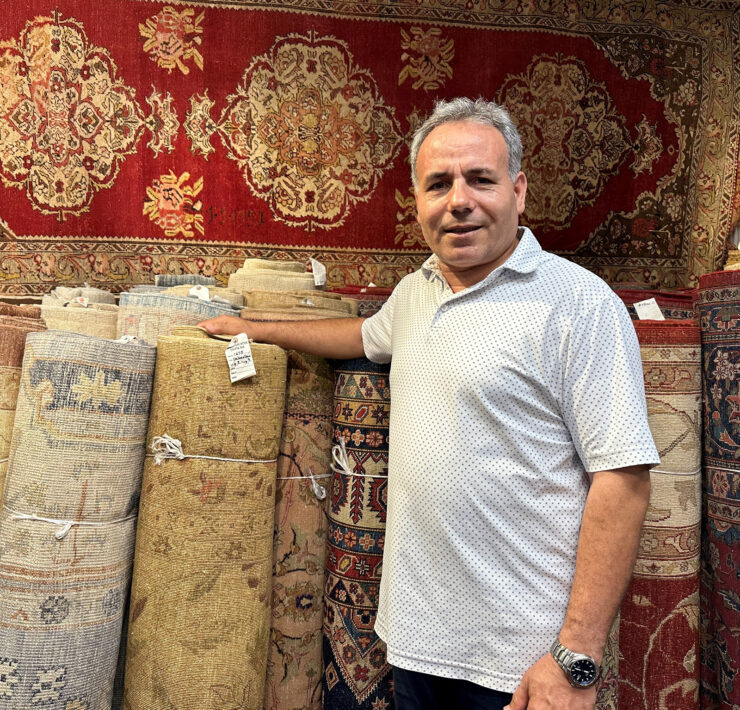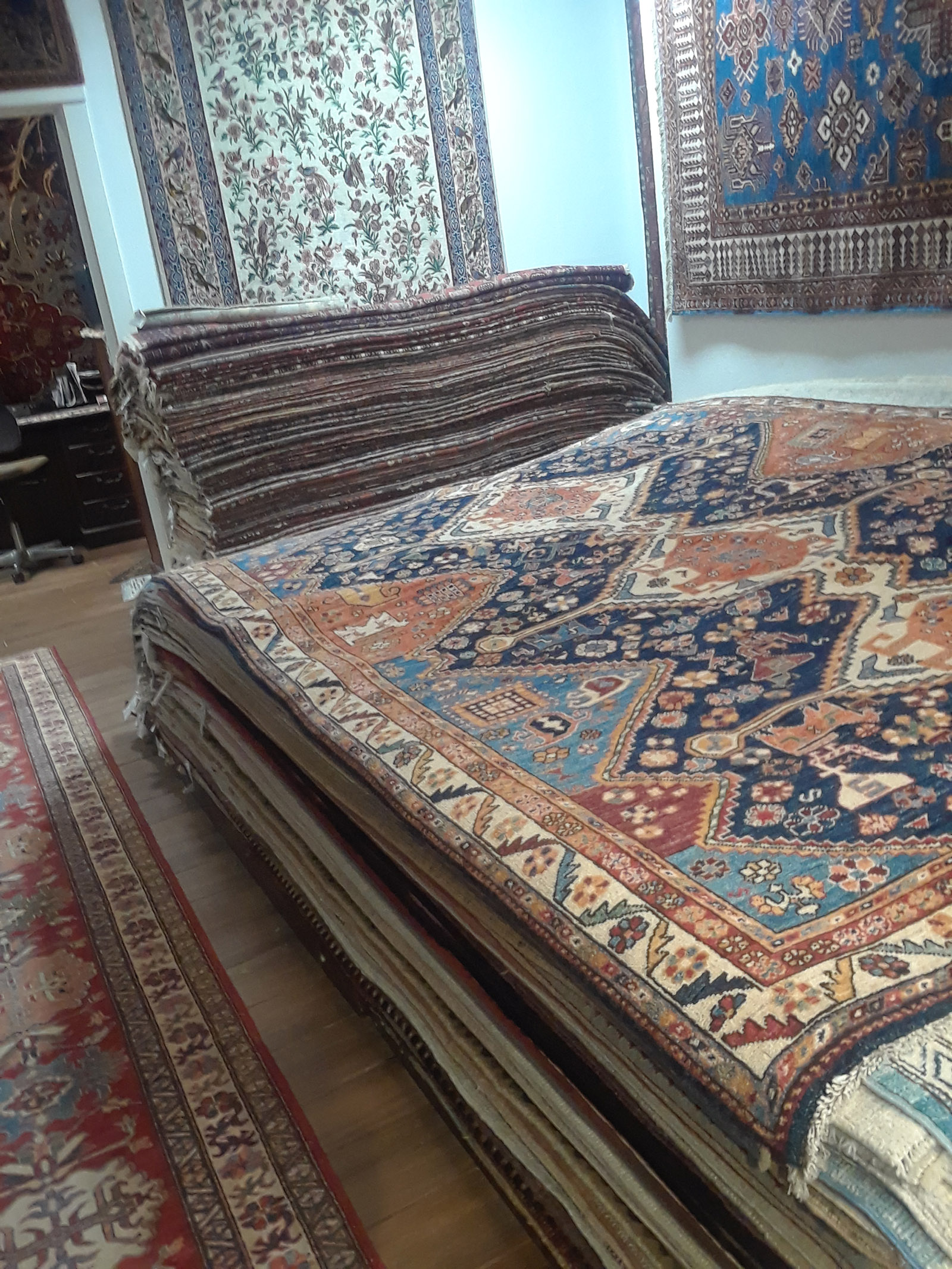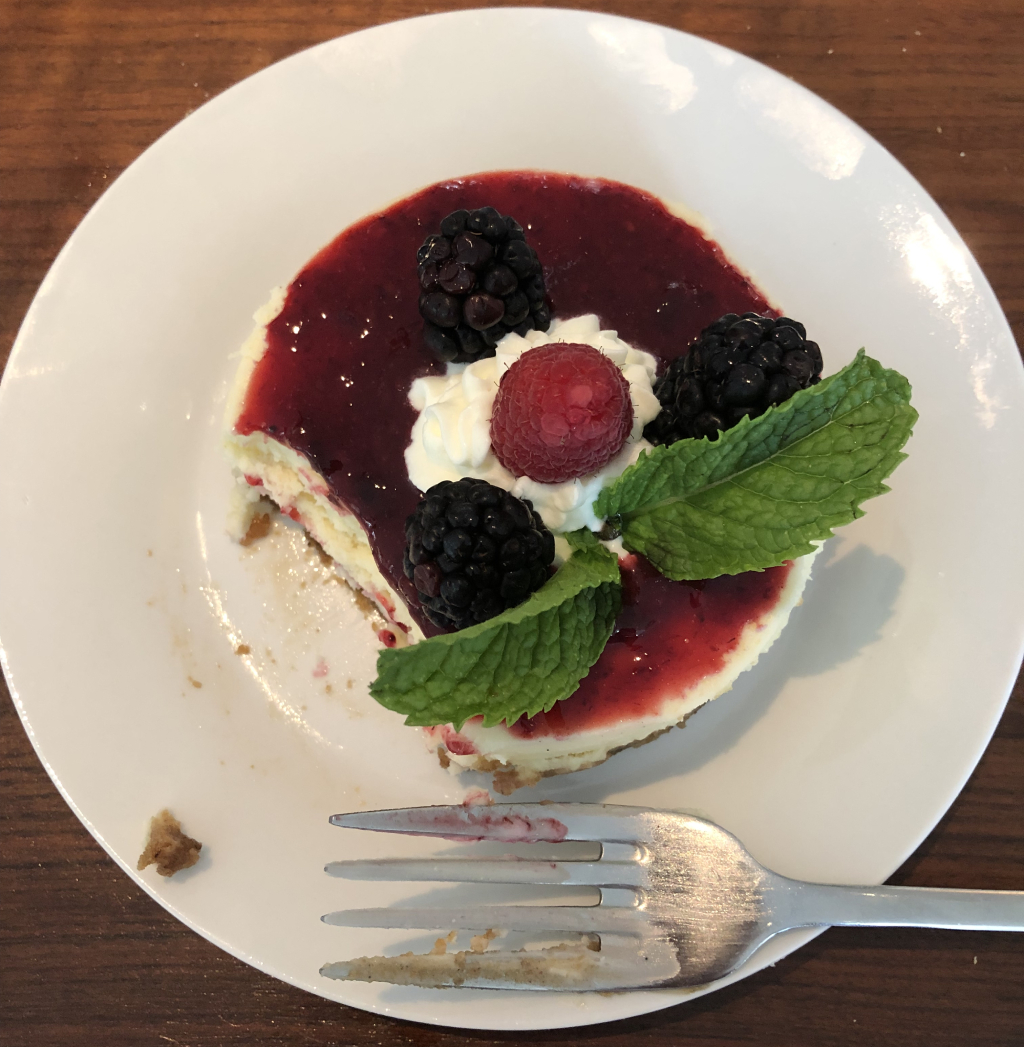Iranian Born Mohsen Rezaei’s World of Rugs: An Interview
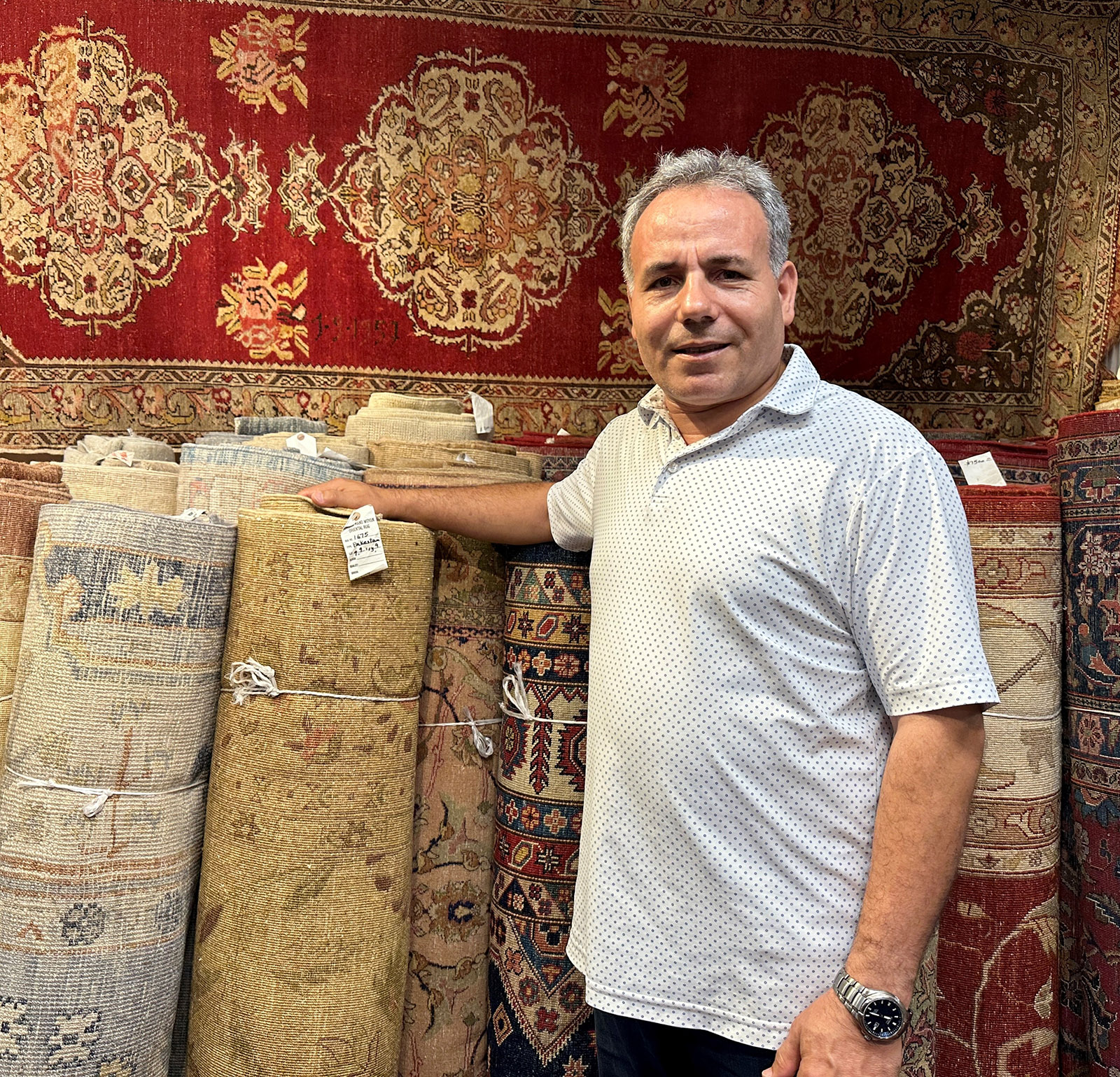
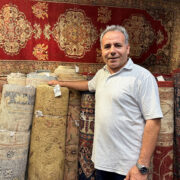
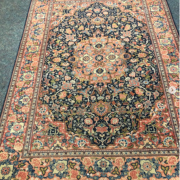
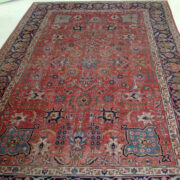
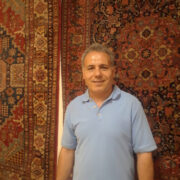 +5
+5 Iranian Born Mohsen Rezaei’s World of Rugs: An Interview
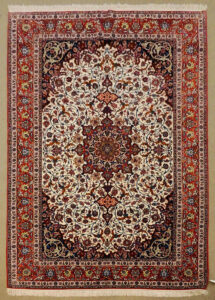
Some priceless objects were irretrievably lost when Alexander laid waste to Persepolis in 321 BC. Manuscripts of Zoroastrian sacred scripture that were housed in Persepolis’ library, for one. Being a student of Aristotle didn’t stop Alexander from letting the Macedonian army torch books. Another deplorable loss were the Persian rugs. Achaemenid dynasty rulers received the satraps who came to pay tribute and kiss their royal feet in sumptuous surroundings. Cyrus the Great had magnificent rugs. So prized was the rug beneath King Xerxes’ gold plated throne in his audience chamber, only the king’s feet could touch it. It’s easy to imagine handwoven Persian carpets throughout the palace complex Alexander ravaged. Interestingly, it was during this Achaemenid dynastic era (6th to 4th century BC) that Persian rugs evolved into a precious art form. I’m not saying this was the beginning of hand woven rugs, that happened long before, I’m saying the manufacturing techniques and pattern designs developed during the Achaemenid period laid the groundwork for Persian rugs’ unrivalled beauty and craftsmanship. Centuries later, the Safavid Dynasty (1501-1736) advanced carpet production by establishing royal workshops and extending patronage to highly skilled artisans. Perhaps you saw some of the Safavid masterpieces on display in MFAH’s Islamic Art galleries.
Ever read Rumi? In one passage the poet urges, “be drawn by the stronger pull of that which you truly love.” In many ways, Iranian born Mohsen Rezaei who founded Mohsen Oriental Rugs in Houston embodies Rumi’s sentiment. Mohsen’s is a deep-rooted connection to the rugs he loves. Born into a family of Iranian rug merchants, he has spent practically his entire life around Persian rugs, is innately aware of their artistry, and feels inseparable from the historical and cultural heritage that permeates them.
Some people seem destined to do what they do. Whenever I meet one, I pay attention. There’s usually a spiritual lesson in this. At the very least I’m reminded to know myself. Over the course of some fun visits to Mohsen’s rug store located on West Alabama Street near the Menil Collection, surrounded by stacks of Persian and Oriental carpets, Mohsen told me his story. “I started to learn about rugs when I was 10 years old. Every summer, during my school break, I would go to the Tehran Rugs Bazaar with my father. I became interested in learning to repair rugs. Most of my family was in the rug business, selling, repairing, and cleaning rugs. By the time I graduated high school, I was an expert at antique rug repair.”
Helping his father nail inventory familiarized him with Iran’s rug producing regions and the different styles historically associated with each, to give examples, Tabriz rugs commonly have medallions, and Isfahan rugs often sport arabesques. Such knowledge, it goes without saying, feeds into his work today. “When I worked with my father in the Tehran market we traveled to all the rug cities in Iran – Tabriz, Hamadan, Esfahan, Qum, Naein, Malayer, Zanjan. Also Mashhad and Kashan. We had agents everywhere who collected rugs for us, who knew what we wanted, meaning a good rug at the right price. Rug dealers who knew my father a long time found good rugs and bought for us. The people we worked with know what we were looking for. Also we were working rug stores outside of the Tehran market, collecting in the evening and bringing to the bazaar the next morning. In Houston I’m doing the same thing. I buy Persian rugs from U.S. wholesalers due to sanctions, and imported Turkish, Indian and Pakistani rugs, and I attend rug shows in New York, Atlanta, Las Vegas and High Point.”
A reason Mohsen buys Persian rugs from U.S. wholesalers is they’re not prohibited by the U.S embargo against Iranian imports which began with the 1979 Iranian Revolution, and strangely enough has been off and on until now. You might recall Obama ditched sanctions, and Trump reinstated. “Obama released the embargo when he made the nuclear deal, then several years later Trump began it again.” Which gets to the heart of a Persian rug. In the simplest of terms, it’s a rug woven inside Iran’s borders by a meticulous process that begins with wool from Iranian sheep being spun into yarn that is colored with natural plant and root dyes such as madder and indigo. Village women typically perform the weaving, using their hands to form threads into small loop-shape knots, arranging knots into the intricate patterns each region is traditionally known for. Design motifs get passed down through generations. Most have symbolic meaning, including pre-Islamic associations.
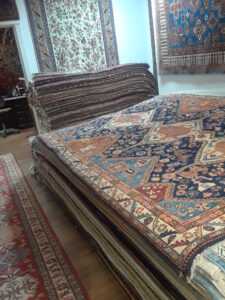
As might be expected, Mohsen’s inventory includes Oriental rugs. On one of my visits I spotted an exceptional Turkish Oushak. Needless to say, rug repair is a cornerstone of his business. Persian rugs generally increase in value over time, so owners tend to hold on to them. If continuing sanctions restrict U.S. supplies and jack-up values, owners will repair and resell years from now to collectors willing to shell it out. Years back, Mohsen repaired my Persian Mahal. Through some haggling, I luckily own four Persians and two from Turkey.
Hamadan is way ancient, one of the world’s oldest cities. Called Ecbatana in antiquity, Greek historians extolled its beauty and riches, describing a gold covered citadel, or as Herodotus suggested, a ziggurat, although archaeologists are having fits trying to find a ziggurat beneath the modern city. In 550 BC Cyrus the Great yanked the rich city into the Persian Empire. In time, his successors built there a summer palace, and you can bet they filled it with Persian rugs. Hamadan became a busy place for buying and selling rugs brought from surrounding areas. Mohsen was born in Hamadan (1972.) “My father and grandfather were from Hamadan. My grandfather didn’t have a store, he simply bought and sold rugs. My father opened his store in Tehran in 1980. My family moved to Tehran in 1990. My father retired and is now a USA permanent resident. Whenever he visits here, I benefit from his experience. You have to really love this business. People don’t stay in it for very long unless they do.”
Houston beckoned. “In 1998, I immigrated to Beirut, Lebanon and worked in the rug business for two years. In 2000, I immigrated to New York City where I repaired rugs. But from the beginning, I disliked how crowded and rushed it was. I wanted to find a quieter city. One of my father’s friends who was also in the rug business suggested Houston is the best place to work and live. After two months in Manhattan, I moved to Houston and started repairing rugs for Mr. Gus Parvizian. In 2003, I began working for myself. My first location was in an antique store on Dunlavy Street. In 2012, I moved to the Antique Pavilion on Westheimer, but in 2022 it closed for demolition. Fortunately I found a building at 1316 West Alabama. After 20 years of business, I have my own building.”
Given all the rugs he’s handled, I couldn’t help but wonder if Mohsen had a favorite. Which rug really turns him on? “Serapi,” he said unhesitatingly. “Unique color, unique design, and they’re always valuable. They are made near Heriz.” By this he means rugs made in villages nestled throughout the Heriz region of northwestern Iran that feature a less frou-frou, less classical, more abstract take on motifs like palmettes or vine scrolls, some with blue tones that bowl you over.






















